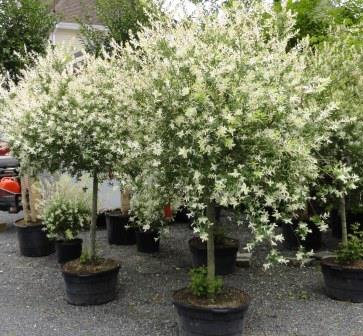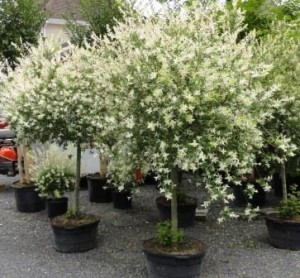
01 Sep Great Idea: Fall Planting
Did you know that fall is one of the best times to plant trees, shrubs and perennials?
Spring might seem the best time to plant, but it can also result in a competition between roots and new shoots for water and nutrients. Because the tops of the plants are dormant and not growing during the fall and winter, they direct their energy reserves towards root growth. As a result, fall-planted trees and shrubs will have better established root systems when spring arrives, making them more able to support the new growth and foliage that comes in that season. As long as the soil temperature is above 40 degrees the roots will continue to grow. Fall planting takes advantage of favorable soil temperatures and moisture conditions that promote the root growth needed to sustain plants through their critical first year in the landscape.
The added root growth also aids the plants during the stressful heat and drought of the summer months, potentially reducing the amount of supplemental water required to keep the plants alive. There are usually not enough roots on newly planted ornamentals to satisfy the water demand of both the shoots and leaves, and wilting may occur. This is called transplant shock and this condition requires frequent watering and diligence to prevent the plant from dying. During the fall and early winter months, the soil temperatures and moisture levels are usually in range that promote rapid root development.
Plant health often depends on root health and, in the fall, the warm soil encourages root growth until the ground freezes. In early spring, the roots begin new growth and continue to develop before the top of the plant begins to develop leaves, flowers and new stems. This gives fall planted plants and advantage. Their roots are well-established before summer arrives and are far better equipped to deal with heat and drought.
Most container-grown and balled and burlapped deciduous trees and shrubs are excellent candidates for fall planting. These plants usually possess well-developed root systems.
One last point is that since people don’t think of planting in the fall and nurseries don’t have a large stock to choose from, the best buys can be found in nurseries at this time. So if you are price savvy, this is the perfect time to buy.
Just to summarize, the main advantages to planting in fall are:
• More root growth than in spring.
• Head start on Spring for establishing roots.
• Moisture is less of a problem, therefore plants need less watering.
• Less competition between roots and new growth.
• Transplant shock is reduced.
• Soil temperature is conducive to root growth.
• Lower prices on nursery stock.



